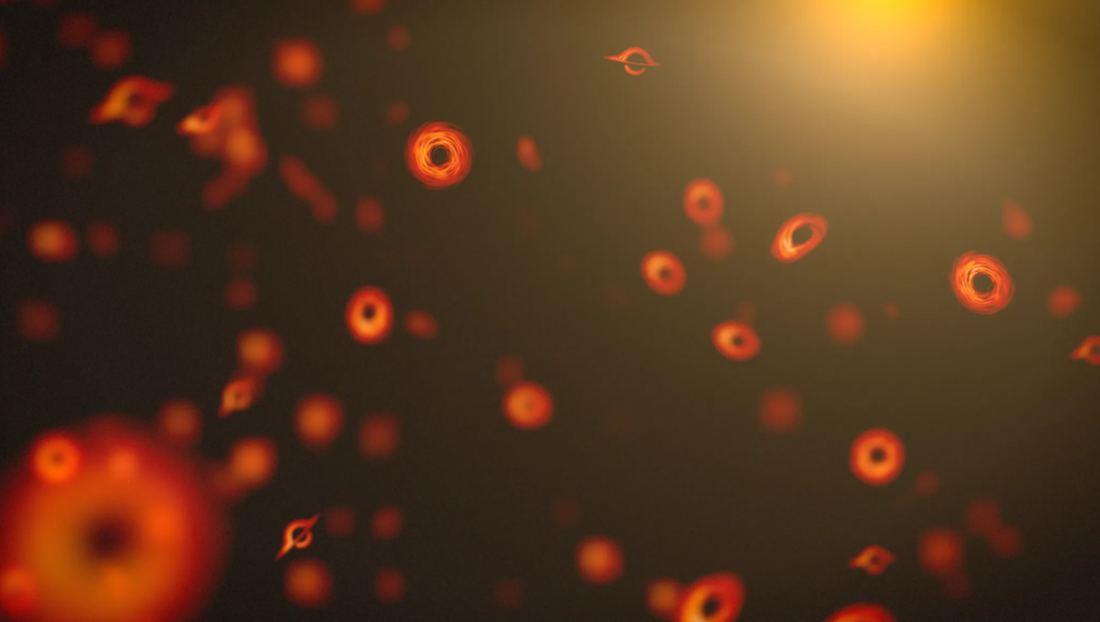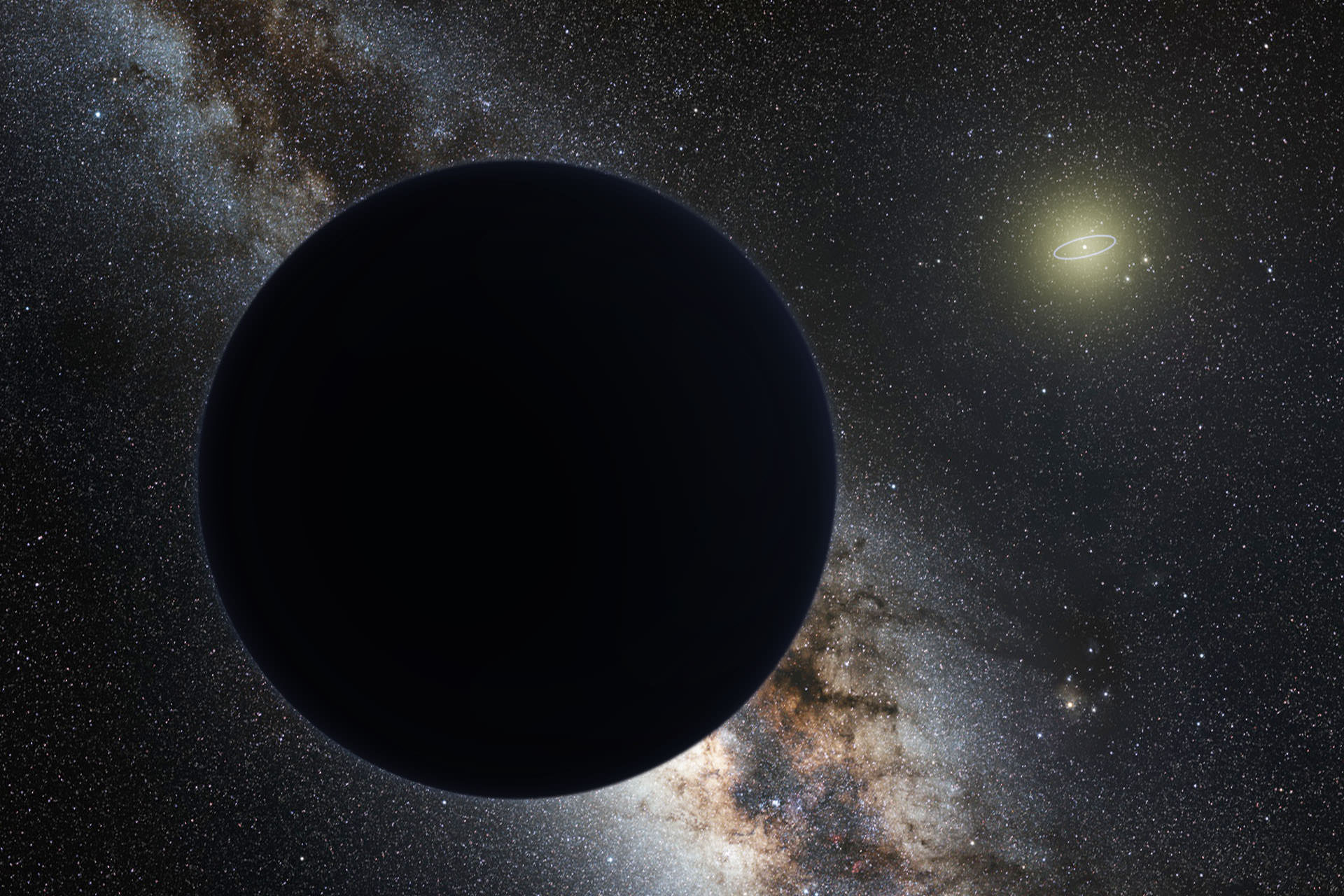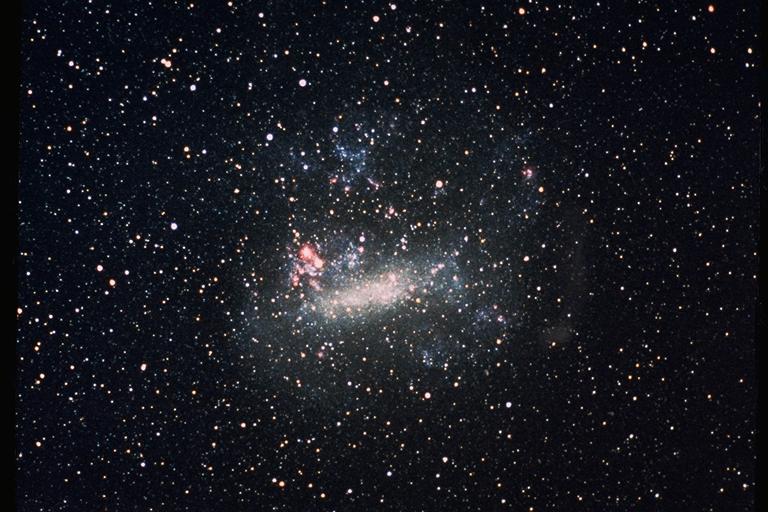The Large and Small Magellanic Clouds are well known satellite galaxies of the Milky Way but there are more. It is surrounded by at least 61 within 1.4 million light years (for context the Andromeda Galaxy is 2.5 million light years away) but there are likely to be more. A team of astronomers have been hunting for more companions using the Subaru telescope and so far, have searched just 3% of the sky. To everyone’s surprise they have found nine previously undiscovered satellite galaxies, far more than expected.
Continue reading “Does the Milky Way Have Too Many Satellite Galaxies?”Astronomers are on the Hunt for Dyson Spheres

There’s something poetic about humanity’s attempt to detect other civilizations somewhere in the Milky Way’s expanse. There’s also something futile about it. But we’re not going to stop. There’s little doubt about that.
One group of scientists thinks that we may already have detected technosignatures from a technological civilization’s Dyson Spheres, but the detection is hidden in our vast troves of astronomical data.
Continue reading “Astronomers are on the Hunt for Dyson Spheres”We Need to Consider Conservation Efforts on Mars

Astrobiology is the field of science that studies the origins, evolution, distribution, and future of life in the Universe. In practice, this means sending robotic missions beyond Earth to analyze the atmospheres, surfaces, and chemistry of extraterrestrial worlds. At present, all of our astrobiology missions are focused on Mars, as it is considered the most Earth-like environment beyond our planet. While several missions will be destined for the outer Solar System to investigate “Ocean Worlds” for evidence of life (Europa, Ganymede, Titan, and Enceladus), our efforts to find life beyond Earth will remain predominantly on Mars.
If and when these efforts succeed, it will have drastic implications for future missions to Mars. Not only will great care need to be taken to protect Martian life from contamination by Earth organisms, but precautions must be taken to prevent the same from happening to Earth (aka. Planetary Protection). In a recent study, a team from the University of New South Wales (UNSW) in Sydney, Australia, recommends that legal or normative frameworks be adopted now to ensure that future missions do not threaten sites where evidence of life (past or present) might be found.
Continue reading “We Need to Consider Conservation Efforts on Mars”Roman Space Telescope Will Be Hunting For Primordial Black Holes

When astrophysicists observe the cosmos, they see different types of black holes. They range from gargantuan supermassive black holes with billions of solar masses to difficult-to-find intermediate-mass black holes (IMBHs) all the way down to smaller stellar-mass black holes.
But there may be another class of these objects: primordial black holes (PBHs) that formed in the very early Universe. If they exist, the Nancy Grace Roman Space Telescope should be able to spot them.
Continue reading “Roman Space Telescope Will Be Hunting For Primordial Black Holes”What Deadly Venus Can Tell Us About Life on Other Worlds

Even though Venus and Earth are so-called sister planets, they’re as different as heaven and hell. Earth is a natural paradise where life has persevered under its azure skies despite multiple mass extinctions. On the other hand, Venus is a blistering planet with clouds of sulphuric acid and atmospheric pressure strong enough to squash a human being.
But the sister thing won’t go away because both worlds are about the same mass and radius and are rocky planets next to one another in the inner Solar System. Why are they so different? What do the differences tell us about our search for life?
Continue reading “What Deadly Venus Can Tell Us About Life on Other Worlds”A Nebula that Extends its Hand into Space

The Gum Nebula is an emission nebula almost 1400 light-years away. It’s home to an object known as “God’s Hand” among the faithful. The rest of us call it CG 4.
Many objects in space take on fascinating, ethereal shapes straight out of someone’s psychedelic fantasy. CG4 is definitely ethereal and extraordinary, but it’s also a little more prosaic. It looks like a hand extending into space.
Continue reading “A Nebula that Extends its Hand into Space”41,000 Years Ago Earth’s Shield Went Down
Earth is naked without its protective barrier. The planet’s magnetic shield surrounds Earth and shelters it from the natural onslaught of cosmic rays. But sometimes, the shield weakens and wavers, allowing cosmic rays to strike the atmosphere, creating a shower of particles that scientists think could wreak havoc on the biosphere.
This has happened many times in our planet’s history, including 41,000 years ago in an event called the Laschamps excursion.
Continue reading “41,000 Years Ago Earth’s Shield Went Down”Fall Into a Black Hole With this New NASA Simulation

No human being will ever encounter a black hole. But we can’t stop wondering what it would be like to fall into one of these massive, beguiling, physics-defying singularities.
NASA created a simulation to help us imagine what it would be like.
Continue reading “Fall Into a Black Hole With this New NASA Simulation”Solar Max is Coming. The Sun Just Released Three X-Class Flares

The Sun is increasing its intensity on schedule, continuing its approach to solar maximum. In just over a 24-hour period on May 5 and May 6, 2024, the Sun released three X-class solar flares measuring at X1.3, X1.2, and X4.5. Solar flares can impact radio communications and electric power grids here on Earth, and they also pose a risk to spacecraft and astronauts in space.
NASA released an animation that shows the solar flares blasting off the surface of the rotating Sun, below.
Continue reading “Solar Max is Coming. The Sun Just Released Three X-Class Flares”New Evidence for Our Solar System’s Ghost: Planet Nine

Does another undetected planet languish in our Solar System’s distant reaches? Does it follow a distant orbit around the Sun in the murky realm of comets and other icy objects? For some researchers, the answer is “almost certainly.”
Continue reading “New Evidence for Our Solar System’s Ghost: Planet Nine”

